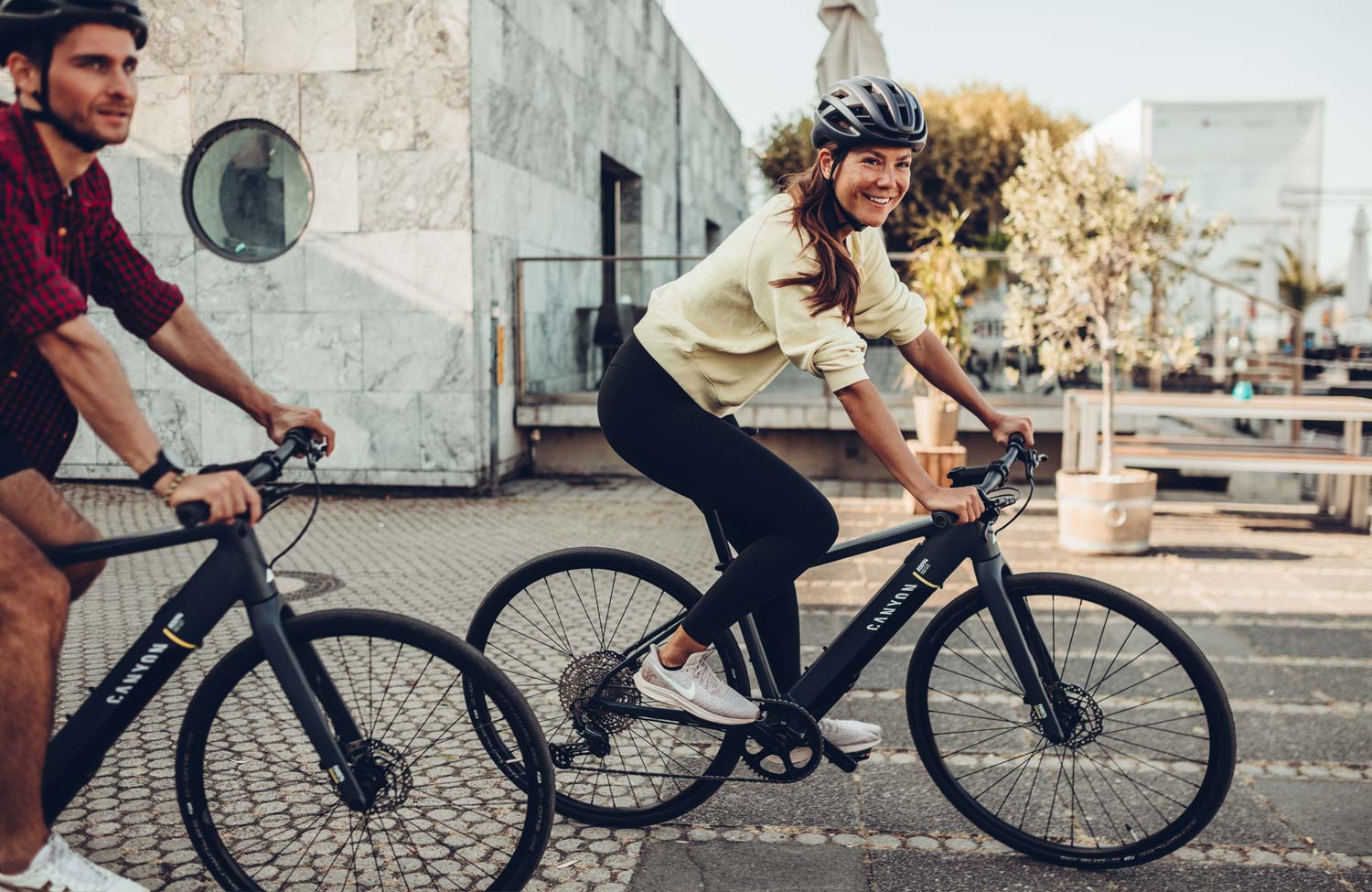E-bikes make cycling easier and more accessible. For your staff who don’t currently ride to work, that could be a game changer.
Cycling to work is good for your staff and good for your business. So the more of your employees who commute by bike, the better.
You can encourage staff to ride by making sure they’re aware of Cyclescheme. Existing cyclists are very likely to sign up. Could-be, would-be, should-be cyclists may need only a nudge. The hardest group to reach, and likely the largest, are non-cyclists: those who might be able to ride a bike but wouldn’t consider using one to get to work. For this group, e-bikes are the answer.
Power to the people
E-bikes take away some of the reasons not to ride, such as…
“I’m not fit enough.”
Not a problem with an e-bike due to the motor assistance. The motor adds to the power you put through the pedals, sometimes doubling or tripling it. You still have to pedal but you never have to pedal hard.
“My journey is too far/hilly.”
Traffic conditions allowing, you can ride the whole way to work at 15mph on an e-bike without breaking sweat. Whatever the route, whatever the weather, it’ll never be a struggle. That means e-bikers can easily ride further – and they do. A study of 10,000 Europeans in 2019 found that the average trip distance was almost twice as far for e-bikers: 9.4km versus 4.8km for those on unassisted bikes.
“I don’t want to wear skin-tight cycling gear and/or get sweaty.”
You can ride to work in normal clothes on a e-bike without getting sweaty because you don’t exercise as hard. It’s like the difference between jogging and going for a stroll. E-bikers are no more likely to need a shower on arrival at work than those arriving by car, public transport, or on foot.

E-bikes through Cyclescheme
E-bikes are more expensive than unassisted bikes. Prices for one you’d want to use on a daily basis start at around £1,000 and go up from there. Tell a non-cyclist this and they may reply: “You could buy a car for that!” That’s true but misleading. It would be a secondhand car with running costs of (to take the UK average) about £2,000 per year.
An e-bike’s running costs are a fraction of that. Recharging the battery costs pennies; the extra electricity will set you back around £10-25 per year. The battery will need to be replaced every few years, but that’s still only about £100-150 per annum. So, while you might be able to buy a car for the price of an e-bike, you couldn’t run one for what it costs to run an e-bike. In fact, buying and using an e-bike instead of driving to work could recoup the e-bike’s purchase price in the first year alone.
And that’s if the e-bike were paid for up front at the full, recommended retail price. With Cyclescheme, that isn’t the case. Assuming your company runs the Freedom to Ride version of the scheme, which isn’t limited to £1,000, your employers can save 23-39% on the price of any e-bike – and pay for it in instalments.
They may not know this. Freedom to Ride is relatively new. It began in 2019 after the Department for Transport updated its Cycle to Work guidance. It’s only since then that it’s been possible to get an e-bike as easily as a sub-£1,000 pedal cycle using the scheme. Tell your non-cycling staff. Send an all-staff email. They may have no idea that they can get an e-bike via Cyclescheme, yet they’re the ones who have most to gain from doing so.
Getting bums on e-bikes
The best way to convince someone about the benefits of an e-bike is to sit them on one and let them ride it – especially if you can include a hill or two. Feeling the difference is more convincing than being told about it.
When social distancing allows, why not contact your local Cyclescheme retailer to see if they’re happy to do an e-bike ‘demo day’? All that’s required is a handful of e-bikes and someone from the shop to answer questions and adjust the fit of the bikes. It needn’t take a day; a morning or afternoon might be sufficient.
You’ll need somewhere for the e-bikes to be ridden, preferably with zero or little traffic. If you can’t find anywhere else suitable, a large company car park could work. Avoid conflict with incoming or outgoing workplace traffic by marking off an area for the e-bikes.
If the demo goes well, everyone wins. Some of your employees will be persuaded to get an e-bike through Cyclescheme, which will provide them with a healthier, more cost-effective way to get to work. You’ll end up with more cycle commuters among your workforce, which means you’ll have happier, more punctual and more productive staff who take fewer days off sick. And the local Cyclescheme retailer will make some sales.
Ultimately, your employees can obtain any bike through Cyclescheme. It’s in your interest if they get one that makes cycling to work more practical and more pleasant, because then they’ll use it more often. When more of your staff cycle more often, everybody benefits.
Comments: